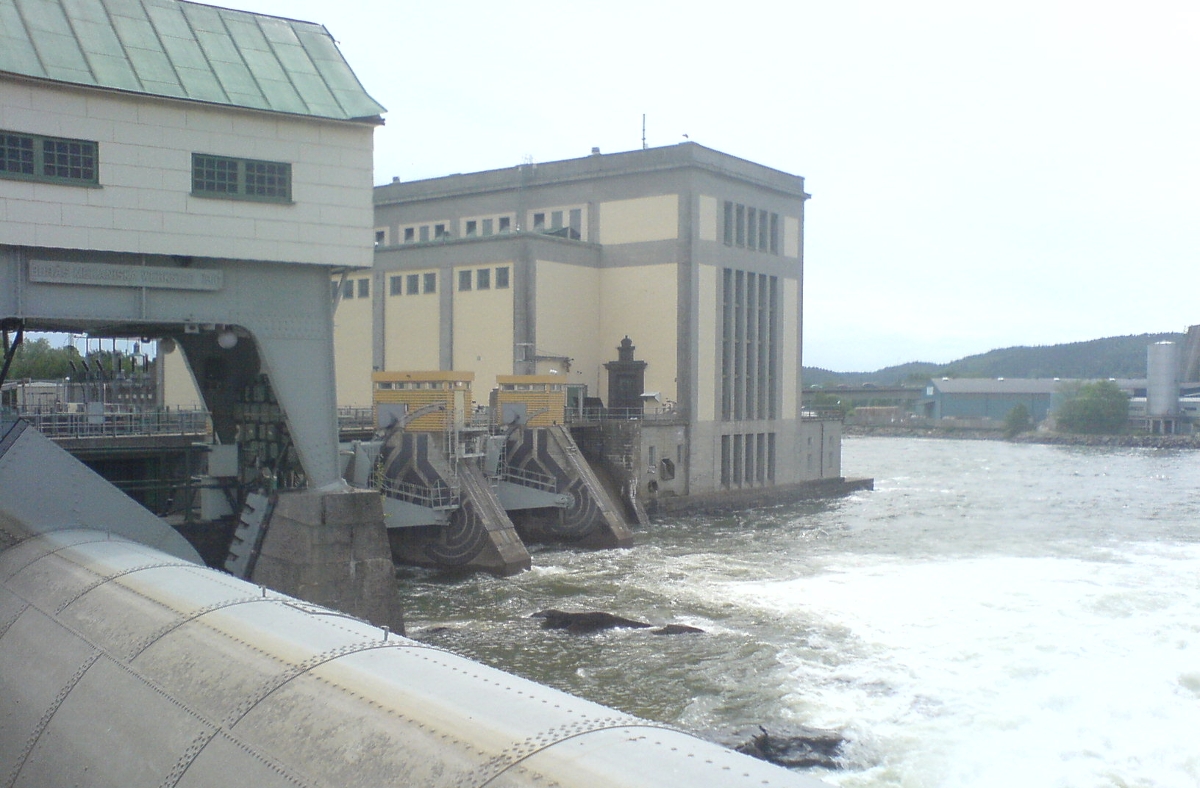Lilla Edet
Facts
Water information

Work on construction of Lilla Edet power plant, which is situated on the river Göta älv, started in 1918. The plant was designed to supply power for the main railway line between Stockholm and Gothenburg. However, due to the recession after the war, Lilla Edet was not commissioned until 1926.
On completion, the Kaplan turbine built as unit 1 was the largest in the world. Since, at that time, the Kaplan turbine had not yet been properly tested, Lawaczeck turbines were chosen for the other two units. However, one of these was later replaced with a propeller turbine. In 1982, a fourth unit with a bulb-type turbine was added.
The site at Lilla Edet had a head of only four metres. When a floodgate was built to the municipality of Trollhättan, a dam was also built in 1916, which increased Lilla Edet's head to 6.5 metres.
Lilla Edet's machine room was designed by the architect Erik Hahr. He broke away from the monumental architectural style which characterised Vattenfall's older power plants in Trollhättan, Porjus and Älvkarleby.
New dam
In 2021, Vattenfall started an extensive dam project in Lilla Edet to secure the production of renewable hydro power for at least another 100 years. The exisiting dam is nearing the end of its lifespan and will be replaced with a new one. Work on the new dam is expected to be completed in 2027.
Fish ladders
At one time, Göta älv was one of the best rivers in Sweden for salmon fishing. To improve conditions for the salmon population and to help the salmon swim upstream, two salmon ladders have been built at Lilla Edet. Every year, Vattenfall releases 35,000 young salmon near the power plant to compensate for the natural spawning grounds which disappeared when the river was expanded.
About the river Göta älv
The river Göta älv, on which Lilla Edet is situated, has its source in Lake Vänern, Sweden’s largest lake. Flowing from Lake Vänern to the Port of Gothenburg and out into the Kattegatt, Göta älv transports more water than any other river in Sweden. The 44-metre drop is mainly concentrated in the upper reaches of the river at Vargön, Trollhättan and Lilla Edet. The river has been a major transport route for centuries, particularly following the construction of the Göta Canal.

